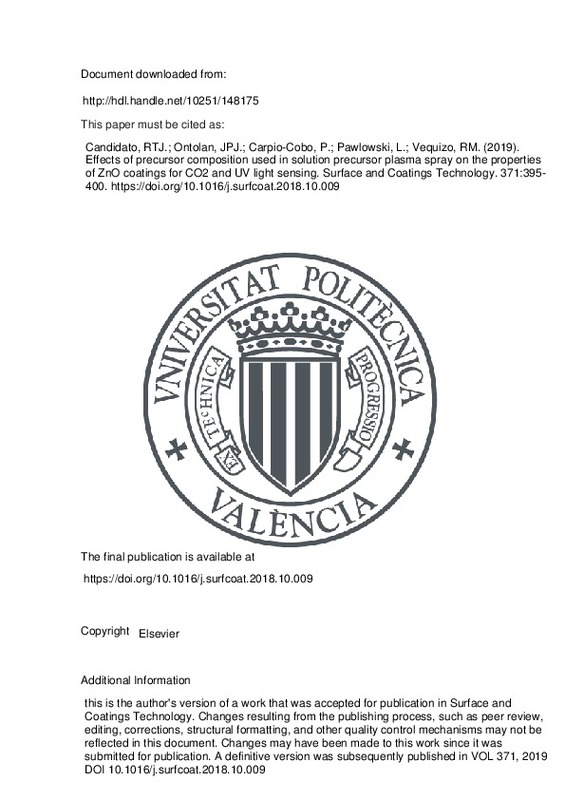JavaScript is disabled for your browser. Some features of this site may not work without it.
Buscar en RiuNet
Listar
Mi cuenta
Estadísticas
Ayuda RiuNet
Admin. UPV
Effects of precursor composition used in solution precursor plasma spray on the properties of ZnO coatings for CO2 and UV light sensing
Mostrar el registro completo del ítem
Candidato, RTJ.; Ontolan, JPJ.; Carpio-Cobo, P.; Pawlowski, L.; Vequizo, RM. (2019). Effects of precursor composition used in solution precursor plasma spray on the properties of ZnO coatings for CO2 and UV light sensing. Surface and Coatings Technology. 371:395-400. https://doi.org/10.1016/j.surfcoat.2018.10.009
Por favor, use este identificador para citar o enlazar este ítem: http://hdl.handle.net/10251/148175
Ficheros en el ítem
Metadatos del ítem
| Título: | Effects of precursor composition used in solution precursor plasma spray on the properties of ZnO coatings for CO2 and UV light sensing | |
| Autor: | Candidato, Rolando T., Jr. Ontolan, Jose Presiphil, Jr. Carpio-Cobo, Pablo Pawlowski, Lech Vequizo, Reynaldo M. | |
| Entidad UPV: |
|
|
| Fecha difusión: |
|
|
| Resumen: |
[EN] The potential of finely-structured zinc oxide (ZnO) coatings developed via solution precursor plasma spraying (SPPS) as CO2 gas and UV light sensor was explored in this work. The coatings were deposited on stainless ...[+]
|
|
| Palabras clave: |
|
|
| Derechos de uso: | Reserva de todos los derechos | |
| Fuente: |
|
|
| DOI: |
|
|
| Editorial: |
|
|
| Versión del editor: | https://doi.org/10.1016/j.surfcoat.2018.10.009 | |
| Descripción: |
|
|
| Agradecimientos: |
The Office of the Vice Chancellor for Research and Extension (OVCRE) of Mindanao State University-Iligan Institute of Technology (MSU-IIT) through the Department of Research (DR) is hereby acknowledged for financially ...[+]
|
|
| Tipo: |
|







![[Cerrado]](/themes/UPV/images/candado.png)

